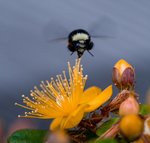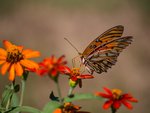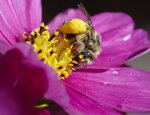


Washington State University Extension Master Gardener John Moore has detailed the importance of pollinators on crops and the ecosystem in an article titled “Gardening for Pollinators.”
As 80% of plant life relies on pollination to reproduce, a number of bees have been driven away not due to pollution, but by a more natural phenomenon, according to Moore.
“Beekeepers were finding that worker bees were leaving their hives and never coming back,” said Moore. “They were finding carcasses of bees like you would with a pesticide problem or disease. Once they tracked it down, they found that it was likely caused by a varroa mite, causing the worker bees to change behavior and leave.”
He said that when he wrote the article in 2017, many beekeepers were losing over 90% of their hives a year, but that has since changed to only 25%, which Moore said is still a concerning trend. According to Moore, one reason for the decrease is beekeepers changed the way they use pesticides. Those include using pesticides only when pests, and not pollinators are present, and by following the label instructions more closely.
“If we could avoid using pesticides at all that would be best, but there are cases where we have to use them, and in that case, just use them properly,” Moore said.
Since Washington state is “fruit-growing country,” Moore said crops are attacked by pests often.
“We could not raise a decent crop without using some kind of pesticides,” Moore said. “But they have found ways to do it correctly, like applying it at the right time of year, in the right quantities, and in the right place. The Washington apple industry does a real nice job of maintaining the pollinator population and getting rid of the apple maggots and other pests that attack the fruit.”
Despite how common honeybees are, Moore said they are not native to North America. They were brought in from Europe in the 17th century. Bumblebees, on the other hand, are native and Moore considers them “better pollinators” than the honeybee.
“(Bumblebees) have hairy bodies and appendages that can carry the pollen very effectively from flower to flower,” he said.
Mason bees are also native. During the spring months, the mason bees pollinate blueberries and other crops at a time when there aren’t a lot of other pollinators around, Moore said.
In the article, Moore said people can keep pollinators alive by providing food, specifically native plants, which are the “most beneficial and reliable source of food.” Native plants “require less work and attention to thrive in their own habitat,” Moore said.
Since pollinators need food year-round, he advises people to plant things that bloom throughout the year. The article also mentions that a water source is also necessary. That can be a bird bath, puddling area for butterflies, or a water garden, but Moore stated the water should be changed out two to three times a week to keep mosquitoes from breeding. A habitat for pollinators is helpful too, as Moore points to programs like Pollinator Pathways from the National Wildlife Federation and the Pollinator Partnership for guidance.
Although honeybees are common pollinators, Moore said they “are in trouble.”
“If we lose all of our honeybees, who’s going to take their place?” Moore said. “The answer is going to have to be native pollinators who aren’t as susceptible to diseases, weather, and other problems. The native pollinators who grew up and evolved in this area are much better adapted to withstand the weather and diseases that are present here. Diversity is crucial in the pollinator community.”
Besides bumblebees and Mason bees, other native pollinators include butterflies, beetles, and hummingbirds.